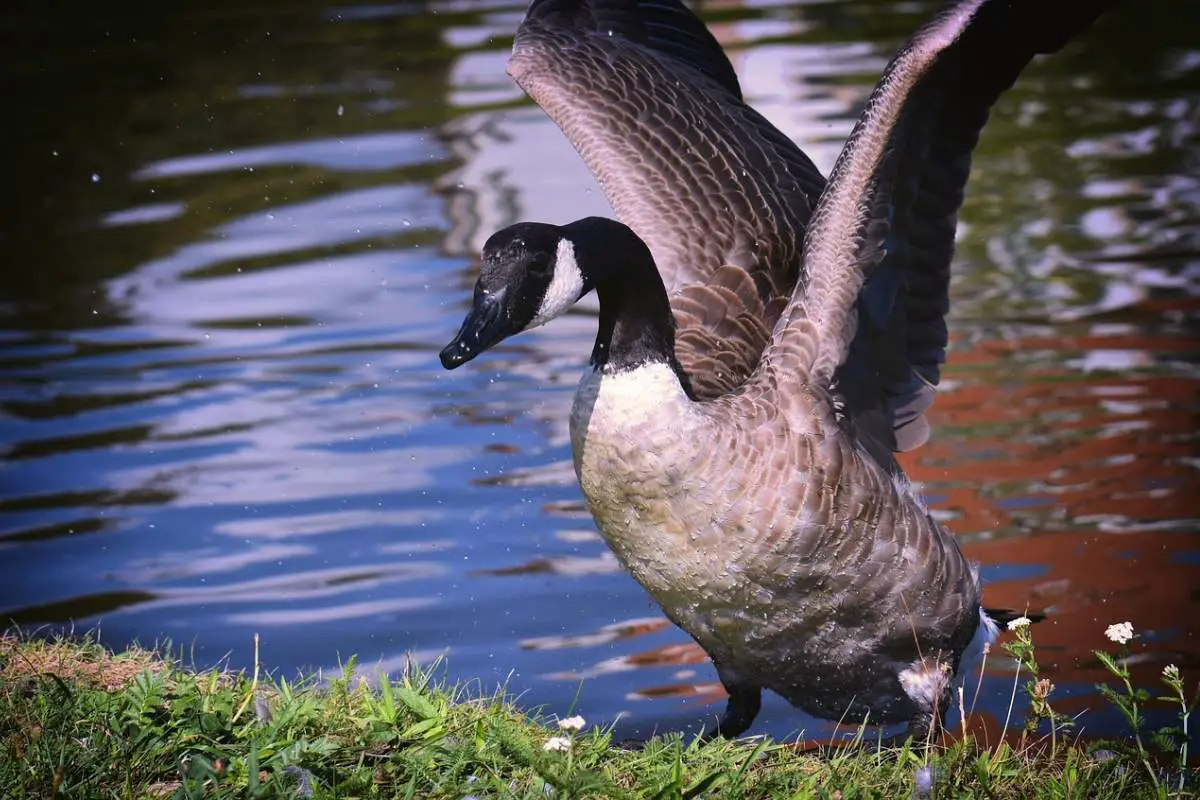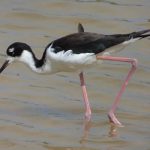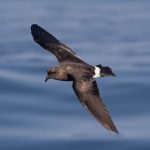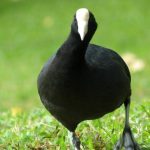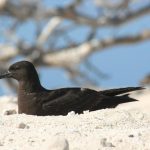Common Name: Canada Goose
Scientific Name: Branta canadensis| Size | Diet | Range in Hawaii | Status in Hawaii |
|---|---|---|---|
| 36 in. | grasses, grains, aquatic plants, and insects | All Islands | Least Concern |
Canada geese (Branta canadensis) are a type of waterfowl native to North America. They are known for their distinctive black head and neck, white chinstrap, and brown body. In recent years, Canada geese have become increasingly common in Hawaii, where they can be found on all major islands.
Canada goose
Appearance
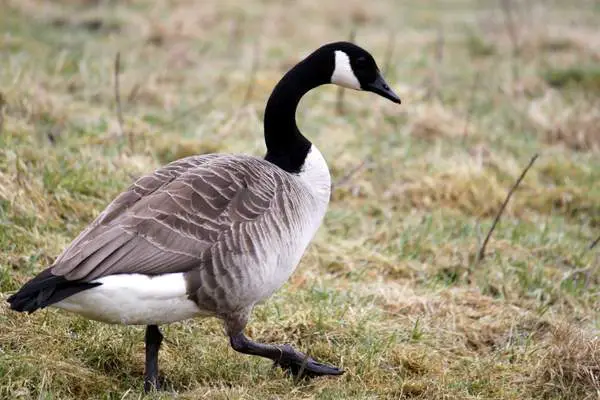
On average, adult Canada geese are about 36 inches (90 centimeters) in length and have a wingspan of up to 54 inches (1.4 meters). The size of Canada geese can also vary depending on the subspecies. Some subspecies, such as the giant Canada goose (Branta canadensis maxima), can be larger than others.
It has a distinctive appearance, with a black head and neck, a white chinstrap, and a brown body. The wings and tail are also brown, with black wingtips. The beak is long and narrow, and the legs and feet are black.
The Canada goose is a sexually dimorphic species, meaning that males and females have different physical characteristics. Males are generally larger and more colorful than females, with a more rounded head and a thicker neck. Females are smaller and less colorful, with a more pointed head and a thinner neck.
Diet
Canada geese are omnivorous, meaning that they eat both plants and animals. Their diet consists of a variety of grasses, grains, aquatic plants, and insects.
Behavior
Canada geese are social birds that are often found in large groups, called flocks. They are known for their strong bonds and can often be seen swimming, flying, and feeding together. These birds are also known for their vocalizations, and they communicate with each other using a variety of honks and other calls.
They are migratory birds, and they undertake long journeys between their breeding and wintering grounds. They typically breed in the northern parts of their range and migrate to the south in the winter months. During migration, they often travel in large V-shaped formations, with the leader taking the lead and the rest of the flock following.
Canada geese are territorial animals and are known to be protective of their nesting sites. They will often chase and attack predators or other animals that come too close to their nests. In the breeding season, males will also perform elaborate courtship displays, including vocalizations and movements, in order to attract a mate.
Nesting
Canada geese are known for their strong pair bonds, and once they find a mate, they typically remain together for life. During the breeding season, which occurs in the spring, male and female geese work together to build a nest. The nest is typically a shallow depression in the ground, lined with grass and other vegetation.
The female lays a clutch of 2 to 8 eggs, and both the male and female take turns incubating them for about 28 days. Once the eggs hatch, the chicks, called goslings, are born covered in down and are able to walk and swim almost immediately. The parents are very protective of their young and will aggressively defend them from any perceived threats.
The goslings grow quickly and are able to fly at about 2 months of age. Once they are able to fly, they will often migrate with their parents to their wintering grounds.
Habitat
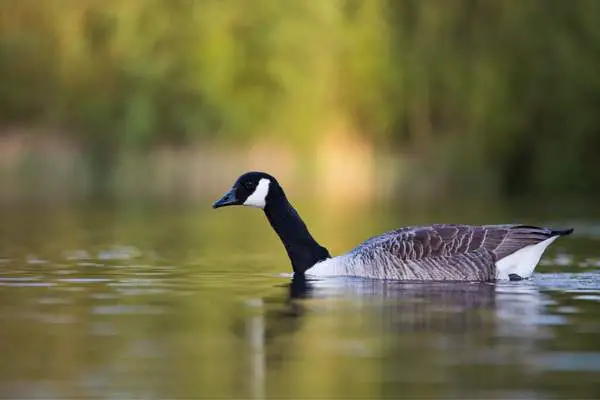
Canada geese are found in a variety of habitats, including wetlands, grasslands, and agricultural areas. They are often found near bodies of water, such as lakes, ponds, and marshes. These birds are also found in urban areas, where they may be attracted to parks, golf courses, and other areas with large lawns and bodies of water.
Range
Canada geese have been observed in Hawaii as early as the 1970s, but their populations have significantly increased in recent years. It is not clear why Canada geese have become more prevalent in Hawaii, but it is likely due to a combination of factors such as habitat alteration, increased urbanization, and the lack of natural predators. Despite their increasing numbers, Canada geese are not considered a conservation concern in Hawaii.
According to the eBird data, Canada geese have been observed on the following islands in Hawaii:
- Oahu
- Maui
- Kauai
- Hawaii (also known as the Big Island)
- Molokai
- Lanai
- Niihau
Conservation Status
Canada goose is not considered to be at risk of extinction. It is considered to be a species of “Least Concern” according to the IUCN.
Interesting Facts
1. They are good swimmers
Canada geese are good swimmers. They have a number of adaptations that make them well-suited to swimming, including webbed feet and a streamlined body shape.
2. They are adapted to living in cold climates
Canada geese are adapted to living in cold climates and are able to tolerate a wide range of temperatures.
3. They are famous
Canada goose is a well-known and widely recognized species of bird. It is famous for a number of reasons, including its distinctive appearance and call, as well as its cultural and symbolic significance.
Frequently Asked Questions:
What is the lifespan of a Canada goose?
The lifespan of a Canada goose can vary depending on a number of factors, such as habitat, diet, and predators. In the wild, Canada geese can live for 10-25 years, with some individuals living even longer. In captivity, Canada geese may live for even longer periods of time.
Are Canada geese a nuisance?
In some areas, Canada geese can be a nuisance due to their aggressive behavior and the mess they leave behind, such as droppings.
Do Canadian geese ever sleep?
Canada geese have a unique way of sleeping that allows them to remain alert and able to defend themselves from predators. When geese sleep, they tuck their heads under their wing and rest in a standing position. This allows them to remain upright and alert, and they can quickly take off and fly if they sense danger.
